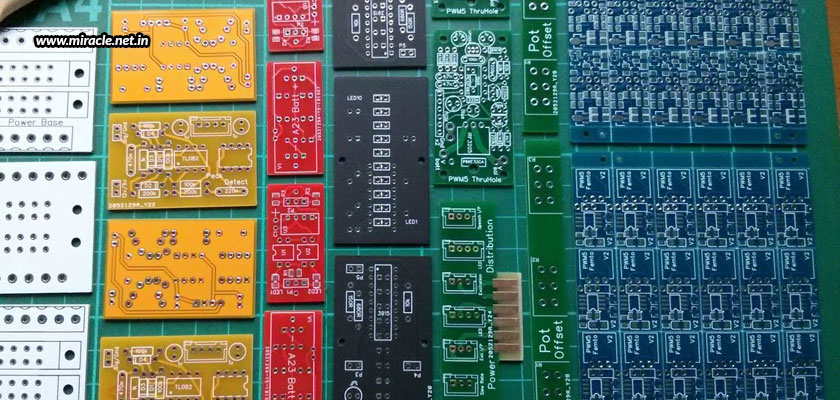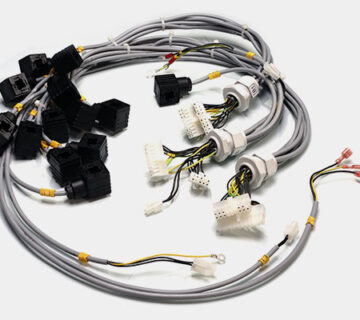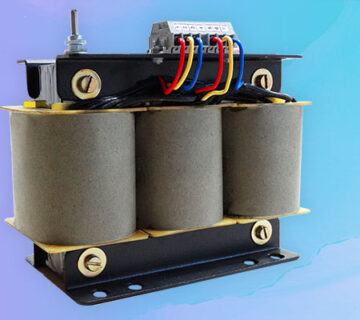When you think of a PCB, you’ll imagine a green board with golden coloured dots and lines, and a lot of pins, sockets, and all sorts of tiny electrical components. Did you realize how we mentioned the word “green” in the above sentence? This does not mean that a PCB is always green in colour. You may or may not be surprised to know that a PCB is not always a green coloured board; it could be many other colours like black, white, yellow, red, pink, purple, and blue. Here, there could be two possible questions arising in out mind –
- Why so many colour options for a mere circuit board?
- If there are so many colour options available, why do we always visualize green when thinking of a PCB?
We understand the dilemma in your mind, which is why we have come up with this PCB colour guide to help clear your doubts. The blog below will let you know about the various colours available for a PCB, how each one differs, and why some colours are better than the others. We’ll also focus on why we generally pick the colour green for our PCBs.
What is PCB colour?
Before diving into the different colours of PCBs available, let us first help you understand what exactly a PCB colour is. The colour that we see on a PCB is that of a covering placed on the FR-4 PCB material; and the colour seen on every board is a result of the colour of the solder mask that protects the bare copper wires on the board against stress, damage, and regular wear and tear. The colour chosen should be such that it has excellent contrast to the overlaying copper wires so that they are easily identifiable, so as to make assembling and repairing tasks easier.
Which colour options are available?
PCBs come in different colours, with the most common one being green. The other colour options include –
- Blue – This colour comes second to green as the contrast between this colour and the copper wires makes it easy to assemble and do repairs.
- Red – This colour is bold, offering high contrast, and making it easy to spot any damages on the board instantly. This is particularly helpful when magnification is used.
- Black – This is one of the most complicated choices because the black colour makes it almost impossible to differentiate between empty spaces, planes, and traces. The board thus needs to be tilted across a beam of light to be inspected.
- White – This is the worst selection since it doesn’t showcase any contrast at all. In fact, the contrast isn’t easily visible even over a beam of light.
Other colours that are rare, but yet on the list, include pink, purple, and yellow. These colours are strikingly contrasting, and expensive too, which is why they are rarely used.
What makes green the most popular option?
Even though there are so many colour options available, green is the most popular one because of a variety of reasons.
- The colour green gives a higher and visible difference in the empty spaces, planes, and traces, which makes it easy to assemble the components, and also easy to identify problems and repair them quickly.
- The colour green isn’t as bright as other colours, which makes it easier for the designers to work with the PCB for longer hours, without stinging the eyes. This is why most manufacturers have readily available green PCBs to sell.
- Because of the above reason, green has become a universal colour, which has made the resources for green PCBs easily available, making green PCBs to be made in larger volumes, thus facilitating mass production.
- Because mass production is possible, the price of green PCBs is considerably reduced. Thus, if you want to choose another colour for your PCB, it’ll be comparatively more expensive.
With green being the most easily available colour, and the cheapest colour available, you’re more likely to pick green when choosing your PCBs. However, you may choose any of the other colours mentioned above too. And, when you do, make sure you have a reputed and reliable manufacturer at your service, who has complete knowledge about what he’s doing; and also has been in the industry for a good amount of time. This will not only ensure that you get the right product, but also guarantee you a lower price, as longer experience means better relationships with material suppliers, and thus lower costs of components. Miracle Electronics tops the list of PCB assembly manufacturers in India in terms of expertise, quality, and cost-effectiveness in every product manufactured.




